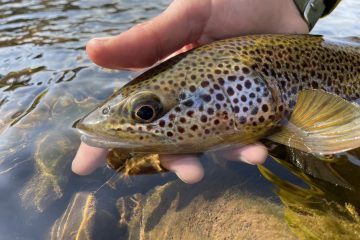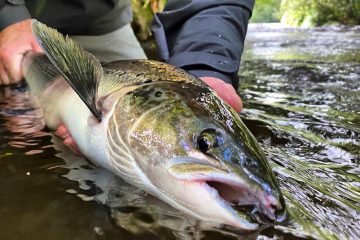I like to think of fly casting as the transferring of energy. When it comes to leaders I prefer to see this process continue so that when we send our fly out to the fish that if we use a tapered leader then the energy can easily be transfered from the thick butt end of the leader that is attached to the fly line all the way to the fly. There will be times when I go for a level leader but this usually tends to be earlier in the season when I am just fishing nymphs and the thinner diameter of a level leader cuts through the water more readily.
As a whole though, for our fishing in Devon we are fishing a dry, either outright, or with a nymph attached to the dry called a variety of names such as New Zealand dropper, Klink and Dink or Dry Dropper.
This is where the tapered leader helps turn over the flies more easily and present them in a natural manner. I prefer to buy shop bought tapered leaders and add a short length of tippet to the leader using a 3 turn water knot. It can also be fun tying your own tapered leaders and with a bit of research you can find a variety of views and designs for home tied tapered leaders.
I am not too scientific when it comes to these recipes and work on what I am looking for the leader to do so if I am chucking a heavy or sizeable dry I’ll want something that turns the fly over with ease so I’ll have a more abrupt taper with pretty thick line all the way down and then go sharply into something short and light.
If I am looking for something a little more delicate then I will taper things more gradually allow my fly turn to turn over gracefully and gently.
Don’t forget though that good casting technique will ensure you’ll get that fly to turn over!
We don’t cast long distances on our small streams so I tend to keep leader length at around 9 to 12 ft. I might lengthen it a bit more if the water is very low and clear but generally casts are in the 15 to 25ft range so I like to have enough line out of the rod tip to get it working for me.
Strength wise I’ll have the tippet at strengths of 2 1/2 (7X) to 3 1/2lb (6X)


